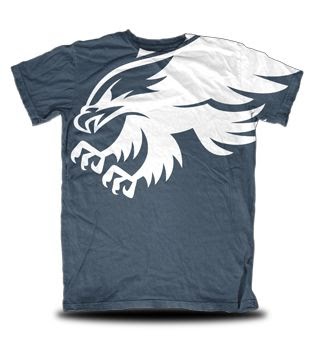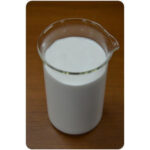
5 Types of T-shirt printing Ink & Their process
A custom success t-shirt printing Ink is determine by a number of factors: it must be appealing, be durable, and have the perfect design! It’s critical to choose the correct printing ink when it comes to getting the design just perfect.
The entire design will break apart if you do not use the correct sort of T-shirt printing Ink. The type of ink used in screen printing, one of the most common printing processes, is important since each has its own set of advantages and disadvantages.
As a result, it’s important to learn the characteristics of various types of T-shirt Printing inks in order to select the appropriate ink for your t-shirt design.
You might want to know the printing process to utilize before making that T-shirt. Though the heat press and screen printing are the two most frequent and popular printing processes these days, we’ll go over three more.
If you want to keep consumers coming back, this is essential. If they don’t receive what they want, customers might leave your sales pipeline.
Customers have become knowledgeable, and they are aware of the various printing processes. Throughout your career, you will see that a big majority of your customers prefer a particular printing process.
- Screen printing :
This Screen T-shirt printing ink It’s the most popular among professionals. Silkscreen T-shirt printing ink is another term for this style.
You’ll need a stencil and nylon mesh for this approach to operate. You place the stencil on the nylon mesh, which holds it in place. A water-resistant substance will obstruct the negative area you wish to create.
The dye is only permeable through the negative space. The screen is then cover with T-shirt printing ink.
Because it ensures perfect duplication of the design, the screen printing process is suitable for printing high-quality t-shirt designs. Customers adore the distinctive, charming, and spectacular look that screen printing provides a garment.
For mass manufacturing of t-shirt designs for your business, the majority of firms employ screen printing processes. It may be hard to create a singular or unique design for oneself.
This approach works well with a single color per screen. It’s not the best choice for multi-color designs with a lot of detail.
- 2. Direct To Garments(DTG):
This DTG T-shirt printing Ink is also popular among amateurs, similar to screen printing. It is simple to accomplish, but it will demand knowledge and abilities if you do not seek expert assistance. It only requires a textile printer and ink to function.
DTG operates in the workplace like a paper printer. The main difference is that the ink is applied to the cloth in this situation. You must first save the design to your computer, which will give it originality and creativity.
For printing out super-complex designs, the Direct To Garment technique is ideal. When you touch the finished design, it offers you a nice feeling in your palms. Because the garment is thin, the DTG T-shirt printing ink employed does not generate bulky additional layers.
It does, however, have one flaw. If you use a low-quality textile printer, you may end up with a low-resolution design with dot patterns. Because the ink is tiny and won’t show up well on dark cloth, you can’t use this approach to make a design.
DTG is the least long-lasting, and the cloth can fade in less than a year.
- 3. Dye Sublimation:
The Dye sublimation T-shirt printing ink On light shirts or materials, dye sublimation works nicely. The expense of producing a dye sublimation is high, but the buyer receives a well-done shirt from specialists in the end.
To get the greatest results from this approach, you’ll need a thorough understanding of dye sublimation. Dye sublimation T- shirt printing ink is ideal for printing polyester fabrics like cream. When you add cotton cloth into the picture, they are unforgiving.
You’ll need a liquid dye that’s specific to this project. When the liquid comes into contact with the polyester cloth, it dries out. When it has completely dried and solidified on the cloth, you may apply heat and pressure to cause sublimation
Heat and pressure are applie to a solid cloth, it transforms into a gas. The fabric molecules then expand, allowing the gas to pass through the gaps in the material. When the heat is remove , the molecules contract once again.
Dye sublimation T-shirt printing ink is ideal for printing short-term graphics on polyester clothing. Sublimated shirts are both durable and attractive.
- 4. Heat Press Printing
Heat press printing T- shirt printing ink only have a few shirts to print, heat press printing is the most cost-effective option. It helps you save money and time.
This approach uses a pattern printed on transfer paper, which is a specific type of paper. This is how it goes.
You start by pressing a shirt against the finest heat transfer vinyl, then applying heat and pressure. A more comparable technique, with minor changes, to dye sublimation. You repeat the process until the heat softens the dye on the paper to the point where it can be seen beneath the fabric.
After that, you remove the dye from the glossy paper transfer, leaving you with the intended design on the shirt.
If you’re dealing with really intricate patterns, the heat and press approach is excellent. Because of the transparent dye, it will not work with dark textiles.
Shirts with heat press printing are long-lasting.
- 5. Vinyl Cutting:
This vinyl cutting T-shirt printing ink process involves cutting particularly soft fabric into shapes or designs, which are then transfer to a shirt. The heat press process is then used to apply these unique graphics to the t-shirt.
You may print one-off designs and even mass-produce them using this approach. It’s the finest option for printing a variety of garments.
You may use several layers to print different colours of a pattern with a vinyl cutting machine. Vinyl cutting is commonly used to create sportswear, slogans, and tiny images.
However, it has one flaw: the pieces are letter-types that you can’t utilise with it. T-shirts printed using vinyl cutting are long-lasting.
This is 5 different types of T-shirt printing Ink
How do you print ink on a shirt?
DIY screen printing is a fun project for both beginner and experienced crafters. Once you’ve mastered the fundamentals, you’ll be able to master more complex methods with ease. You may use a number of ways to print on other surfaces, but this article will focus on screen t-shirts printing ink with stencils.
T-shirts can be screen-print by hand or by machine. This approach is the gold standard for T-shirt printing in any case. Original screens of your T-shirt design will be create by the printer, allowing you to print in large quantities
Which paint is used for T-shirt printing?
There are many different types of paint that you may use to paint a T-shirt. T-shirt paints are particularly developed for use with textiles so that they adhere properly and don’t run when washed.
There are different types of fabric paints Textile Paints, Dimensional Paints, Spray Paints, Acrylic Paints You can help Yourself select which is perfect for your project.





